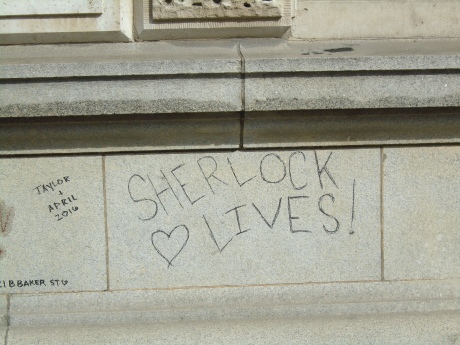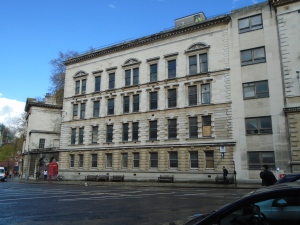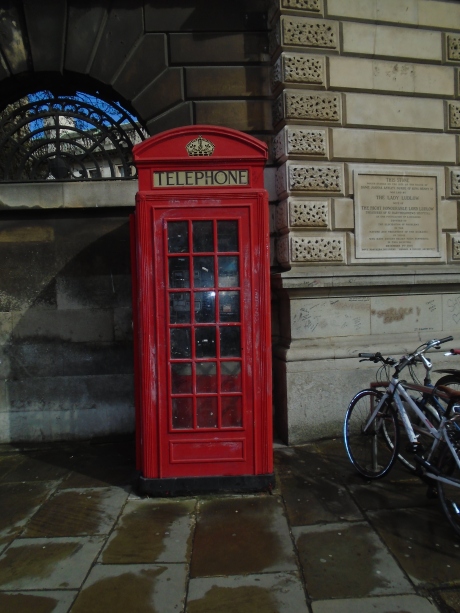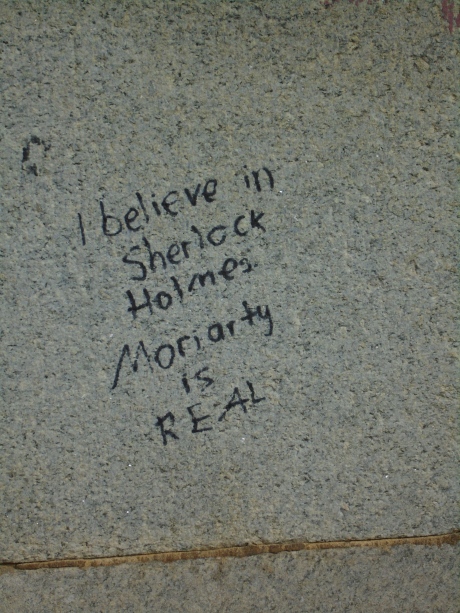
LONDON is a city of shrines. They abound like red buses. From modest City churches and grand cathedrals through to DIY Buddhist temples lurking at the end of leafy suburban gardens, the mighty metropolis is awash with places of worship, remembrance and adoration.
But for every ornate altar and grand chapel there is a collection of dead flowers assembled at the base of a lamppost or tied to roadside railings, a rain smeared handwritten sign marking the passing of a traffic accident or street stabbing victim. These are perhaps the most heartfelt of shrines, genuine and spontaneous outpourings of grief.
This type of shrine is a familiar sight in the capital these days, a poignant addition to London’s street furniture. Occasionally these makeshift memorials turn permanent; the plaque that now marks the spot in Eltham where teenager Stephen Lawrence was murdered in April, 1993 a notable case in point. The sad fact that this plaque has been vandalised several times since it was put in place shows that not all shrines attract worshippers.
Then there are the unofficial shrines inspired by popular culture, by events in popular culture and, once again and perhaps inevitably, by death.
These include what remains of the tree on Barnes Common that claimed the life of elfin glam rocker Marc Bolan in the late summer of 1977. I found it an eerie and sad place when I visited one winter afternoon many years ago while researching my Rock and Roll Tourist slot for BBC London (or GLR as it was at the time). I haven’t returned since.
More accessible is the zebra crossing in St John’s Wood immortalised by the Beatles on the cover of their Abbey Road album. The fact that said zebra is in a slightly different location to the one featured in that famous 1969 photo session doesn’t seem to bother the hordes of Japanese tourists who use the current crossing for impromptu photo shoots of their own, much to the frustration of many a London cabbie.
Tucked away just off Regent’s Street, meanwhile, in now fashionable Heddon Street is a red telephone box that attracts David Bowie fans from all over the world. Heddon Street, then a neglected side street but now proclaimed on one website as a ‘food quarter just off Regent Street,’ was the location for the cover shoot for Bowie’s breakthrough Ziggy Stardust LP in 1972 and the telephone box that features on the back cover gets most of the attention. The surrounding walls are covered in graffiti while many a snap are snapped. As with Abbey Road, it doesn’t seem to bother people that today’s telephone box is not the same one featured on the Ziggy album cover. Sentiment, after all, often blurs the edges of hard historical fact.
And then a few weeks ago, while roaming the Great Wen, I chanced across a new London shrine, a quirky one at that.
I had been walking around my old haunts of St.Luke’s, Clerkenwell and Smithfield – as is often my way – when after passing the William Wallace memorial as I headed towards Giltspur Street I chanced across an old style red telephone box situated just yards from the main entrance to St.Bartholomew’s Hospital.


St Bartholomew’s Hospital and the telephone box that has become a shrine to Holmes, Watson and Moriarty.
London’s telephone boxes are mostly moribund and forgotten these days, and apart from offering a free canvas for ‘tart cards’ are largely obsolete in the mobile phone age. But this particular kiosk was different. A handwritten sign pasted in one window proclaimed: THE KING HAS RETURNED – #MoriatyLives. Inside was a gallery of graffiti, in a variety of languages, some of it obvious and some of it is obscure. ‘CALL SHERLOCK,’ read one inscription, while another instructed ‘CALL MYCROFT.’
This, then, is a shrine to Sherlock Holmes, and to a lesser extent Dr Watson and Mycroft too. It’s also a shrine, of sorts, to Moriaty, who for one of popular literature’s bad guys certainly has his share of admirers.
The location of this shrine makes perfect sense, for it was here that the second series of Sherlock ended with the apparent suicide of Holmes from the roof of Bart’s, a clever post-modern reinterpretation of Conan Doyle’s The Final Problem, which ends with Holmes (and Moriaty) plunging to their supposed deaths at the Reichenbach Falls.
There is another link with Holmes and Watson and St Bart’s, London’s oldest hospital. In A Study in Scarlet, in which Doyle introduced Holmes to the reading public back in 1887, the great detective and Watson meet for the first time. This meeting takes place in one of the hospital’s laboratories.

What will happen to this latest London shrine remains to be seen. It is still a functioning telephone box, after all, so one supposes the graffiti will have to be removed as and when BT see fit. Since my initial discovery, as it is a working kiosk, I have been tempted on several occasions to call the number and, should it be answered, enquire about the great man and his friend the good doctor.
The number is (020) 7606 5183. Do with it what you will.

You make me want to call the number! Hope you can check out my own whimsical post on Sherlock Holmes keeping bees:
http://wp.me/p4coOx-6k
Cheers, Annabelle